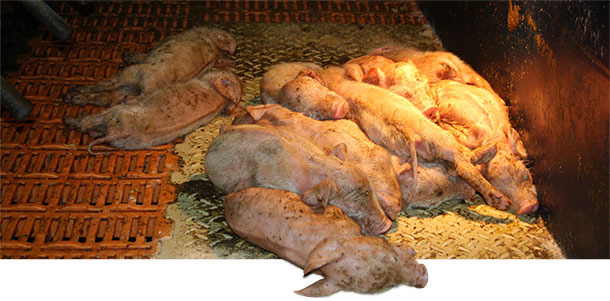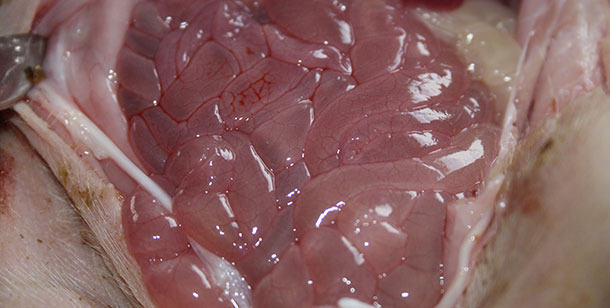In contrast to individual areas within Europe like Northern Italy, most European countries did not observe clinical disease due to infection with porcine epidemic diarrhea virus over the last decades and therefore, the presence of the virus was not intensely investigated.


Figure 1: Suckling piglets severely affected by PEDV in a piglet producing farm in southern Germany.
Since September 2014 however, several outbreaks of PEDV have been reported in Europe, which dated back to spring 2014. The first published report described acute outbreaks of PEDV in finisher herds in Northern Germany. Similar outbreaks were reported from other areas of Germany. While at the beginning, reports were limited to finisher sites, first outbreaks in sow herds were detected in fall 2014. Disease outbreaks were not limited to Germany. Colleagues form the Netherlands recently described a case of PEDV at the 7th ESPHM in Nantes (May 2014). No scientific reports were published from other European countries, with the exception of a clinical case of PED described in Ukraine by John Carr. Since December 2014, BPEX organized PED webinars on a regular basis in order to provide knowledge exchange between European countries and North America. During those webinars, reports of PED outbreaks were described by colleagues from France and Austria, and suspicious cases also occurred in Spain. In personal communications, outbreaks were also reported from Estonia, which were confirmed by laboratory investigations of diarrheic samples in German laboratories. At present, France is the only EU member state which made the disease notifiable. Therefore, no official numbers of affected herds within different countries are available. Guesses on the number of affected herds in Germany are beyond 150, which include finisher sites (approximately 2 thirds) and also sow herds. Latest numbers reported from the Netherlands range around 45 cases, 80 % finisher herds and 20 % sow farms.

Figure 2: Small intestine from an affected suckling piglet showing the characteristic lesions:
thin and transparent intestinal walls and accumulation of fluid in the intestinal lumen.
The clinical picture in most affected herds is mild, compared to descriptions from the US or Asia. Most commonly, diarrhea and reduced feed intake are observed in pigs of all age groups. Clinical signs usually wane within a few days to weeks and losses during outbreaks are insignificant. In individual sow farms however, high losses of suckling piglets were reported. For example, a piglet producing farm in southern Germany, which suffered an acute outbreak of PED in fall 2014, experienced losses of 70 % in suckling piglets of one farrowing batch (figure 1). No co-infections with other known enteric pathogens were detected in that herd and gross and microscopic lesions in affected piglets were typical for PEDV (figure 2). According to experiences in German sow herds, high losses occur when suckling piglets which are not protected by maternal immunity get infected within the first week of life. In older piglets the disease is usually not fatal.
All sequenced PEDV isolates that were found recently within European countries including Germany, the Netherlands, Austria, and Estonia were most closely related to so called S INDEL PEDV, which was originally described in the US in January 2014. The reference strain of S INDEL PEDV (OH851) was reported to be of lower virulence causing mild clinical signs compared to other isolates currently circulating in the US. Current strains circulating in Ukraine were reported to be of high virulence and cluster with prototype US PEDV.
In southern Germany and Austria, where the author was involved in acute cases of PED, the number of new outbreaks is declining at the moment. This could be explained by warmer weather conditions which lead to a shorter survival time of the virus outside the host and therefore, make transmission between herds less likely. If new waves of disease outbreaks occur in fall and winter remains to be seen, but is likely to occur. The implementation of proper biosecurity protocols including sanitation of transport vehicles, which in certain areas of Europe is severely neglected, would be necessary in order to prevent further spread of the virus.


